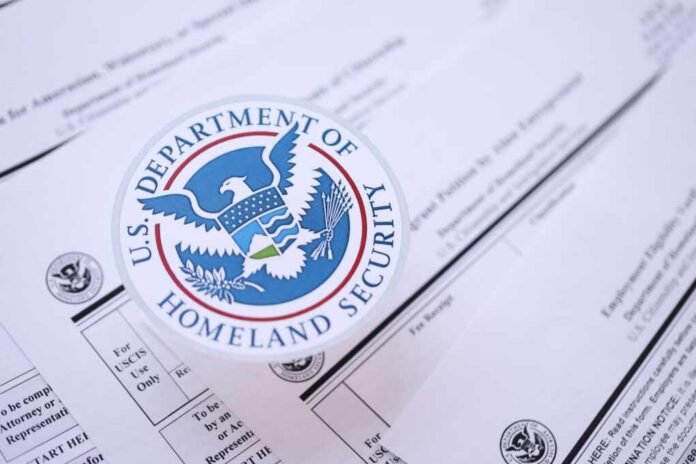
When a senior DHS official admits nearly 600 known or suspected terrorists have been arrested inside our own borders, the only rational response is: How did we let it get this bad—again?
At a Glance
- DHS Assistant Secretary Tricia McLaughlin confirmed nearly 600 known or suspected terrorists arrested inside the U.S. interior.
- ICE operations also netted 2,700 members of the violent Tren de Aragua gang amid sweeping nationwide raids.
- Local “sanctuary” jurisdictions hinder federal arrests, increasing risks for agents and communities.
- The federal government is now reportedly using Guantanamo Bay to detain migrants with serious criminal records.
DHS Reveals Shocking Terror Arrests—And the Obstacles We Created
Department of Homeland Security Assistant Secretary Tricia McLaughlin dropped a bombshell: nearly 600 known or suspected terrorists were arrested inside the U.S. interior this year. Not on some far-off battlefield, not at a border checkpoint—but right here, in towns and cities across America. She didn’t stop there. ICE operations also swept up 2,700 members of the Tren de Aragua gang—one of South America’s most feared criminal organizations—now apparently thriving on U.S. soil. The question practically asks itself: How did we get here, and what’s being done to pull us back from the brink?
BREAKING 🚨 ICE has arrested almost 600 known terr*rists and 2,700 members of Tren de Aragua in our country
LET’S FREAKING GO. I ABSOLUTELY VOTED FOR ALL OF THIS 🔥 pic.twitter.com/miS25p0BXR
— MAGA Voice (@MAGAVoice) July 9, 2025
These numbers aren’t coming from some anonymous source or a partisan blog. They’re straight from the mouth of the DHS Assistant Secretary for Public Affairs, the official tasked with communicating agency priorities and justifying enforcement actions. The magnitude of the threat—nearly 600 terrorist suspects and thousands of violent gang members—should be enough to send a chill down anyone’s spine, regardless of political persuasion. Yet, remarkably, the conversation in many city halls across America remains focused on how to shield these same suspects from federal agents, under the feel-good banner of “sanctuary.”
Watch: DHS Assistant Secretary Tricia McLaughlin Can Do This All Day With Legacy Media
Sanctuary Jurisdictions: A Gift to Criminals and a Nightmare for Law Enforcement
McLaughlin pointed directly to the role of local “sanctuary” policies in making these arrests more dangerous and less effective. In jurisdictions where local police refuse to honor ICE detainer requests, federal agents are forced to conduct risky street arrests. It’s a scenario that would be laughable if it weren’t so deadly serious: law enforcement agencies, supposedly on the same side, are now at odds, all thanks to politically-motivated policies that put ideology ahead of public safety.
ICE isn’t exactly rounding up soccer moms here. Seventy percent of their arrests are “criminal illegal aliens with convictions or pending charges.” And let’s not kid ourselves about the so-called “non-criminals.” Many lack U.S. convictions not because they’re innocent, but because we have no access to their foreign criminal records or the intelligence that flagged them as national security threats.
Operation Tidal Wave and the New Era of Aggressive Enforcement
Faced with these realities, federal agencies have ramped up large-scale enforcement actions. The recent “Operation Tidal Wave” in Florida, for example, saw ICE coordinate with state and local law enforcement to arrest over 1,100 criminal noncitizens in a single week—the largest haul in ICE’s 22-year history. These were not petty offenders. According to Customs and Border Protection, 63% had prior criminal arrests or convictions, including charges for homicide, sexual assault, drug trafficking, and gang activity.
While the left wrings its hands over “humanitarian” concerns, Congress is funneling billions into border security and enforcement. The House reconciliation bill earmarks $8.3 billion for new Border Patrol agents and infrastructure, while another $12 billion is set aside for states supporting border-related enforcement. Texas, for one, has already spent over $11 billion on its own “Operation Lone Star,” and the federal government is finally stepping up with reimbursements. The message is clear: States that take border security seriously are no longer being left to fend for themselves.

























